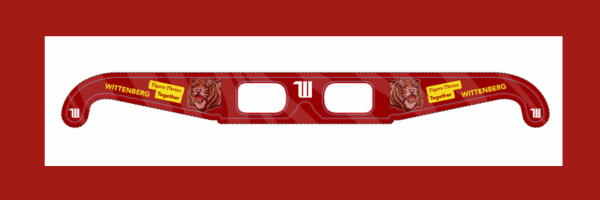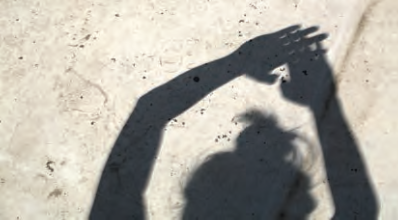The only safe way to look directly at the eclipsed Sun is through special-purpose solar filters, such as “eclipse glasses” or handheld solar viewers. Ordinary sunglasses, even very dark ones, are not safe for looking at the Sun; they transmit far more sunlight than is safe for our eyes. During this eclipse, there is no time when it is safe to look directly at the Sun without using a special-purpose solar filter that complies with the transmission requirements of the ISO 12312-2 international standard. More information about eye safety and the eclipse.
Wittenberg will be making available specially designed eclipse glasses for the campus community. More information on where to pick-up with be forthcoming.

Instructions for the Safe Use of Solar Filters and Viewers
- Always inspect your solar filter before use; if scratched, punctured, torn, or otherwise damaged, discard it. Read and follow any instructions printed on or packaged with the filter.
- Always supervise children using solar filters.
- If you normally wear eyeglasses, keep them on. Put your eclipse glasses on over them or hold your handheld viewer in front of them.
- Stand still and cover your eyes with your eclipse glasses or solar viewer before looking up at the bright Sun. After looking at the Sun, turn away and remove your filter – do not remove it while looking at the Sun.
- Do not look at the uneclipsed or partially eclipsed Sun through an unfiltered camera, telescope, binoculars, or other optical device.
- Similarly, do not look at the Sun through an unfiltered camera, telescope, binoculars, or any other optical device while wearing your eclipse glasses or using a handheld solar viewer in front of your eyes — the concentrated solar rays could damage the filter and enter your eyes, causing serious injury.
- Seek advice [https://www.wittenberg.edu/academics/physics/faculty-staff] from Professor Emeritus of Physics Dan Fleisch or Professor and Chair of Physics Paul Voytas before using a solar filter with a camera, telescope, binoculars, or any other optical device; note that solar filters must be securely attached to the front of any telescope, binoculars, camera lens, or other optics.
What If You Don’t Have a Safe Solar Filter or Viewer?
 An alternative method for safe viewing of the partially eclipsed Sun is indirectly via pinhole projection. For example, cross the outstretched, slightly open fingers of one hand over the outstretched, slightly open fingers of the other, creating a waffle pattern. With your back to the Sun, look at your hands’ shadow on the ground. The little spaces between your fingers will project a grid of small images on the ground, showing the Sun as a crescent during the partial phases of any solar eclipse. Or look at the shadow of a leafy tree during a partial or annular eclipse; you’ll see the ground dappled with crescent or ring-shaped Suns projected by the tiny spaces between the leaves.
An alternative method for safe viewing of the partially eclipsed Sun is indirectly via pinhole projection. For example, cross the outstretched, slightly open fingers of one hand over the outstretched, slightly open fingers of the other, creating a waffle pattern. With your back to the Sun, look at your hands’ shadow on the ground. The little spaces between your fingers will project a grid of small images on the ground, showing the Sun as a crescent during the partial phases of any solar eclipse. Or look at the shadow of a leafy tree during a partial or annular eclipse; you’ll see the ground dappled with crescent or ring-shaped Suns projected by the tiny spaces between the leaves.

